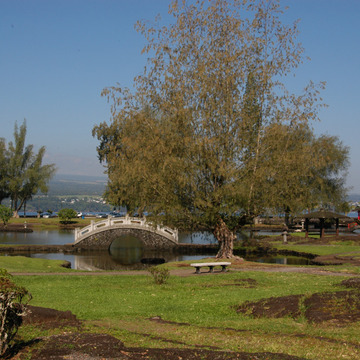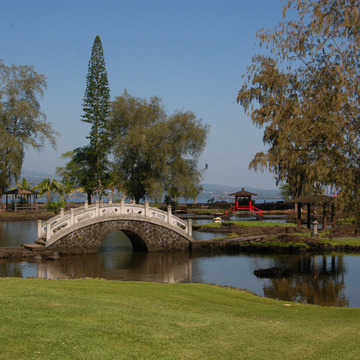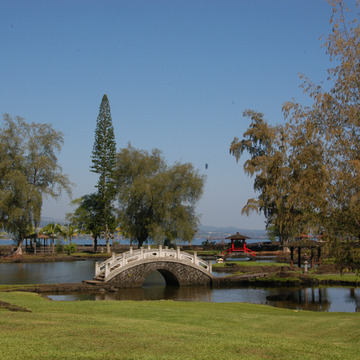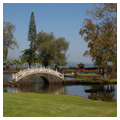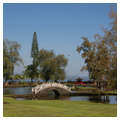Torii (gateway) mark the entrances to this tranquil, contemplative space, the inspiration of Mrs. C. C. Kennedy, who sought to give Hilo “a bit of Oriental outdoor art in the midst of its bustling Americanism.” Following a trip to Japan in 1914, Kennedy was instrumental in having the county acquire this seventeen-acre parcel for the garden. With its winding chain of lava-rock-lined ponds and placid spaces, and its integration of Japanese and local plantings within the natural topography, the park remains a respite from routine. Open pavilions and picturesque bridges, including the stone moon bridge, and the red-painted rest house add focal points and viewing platforms. Many of the numerous stone lanterns were gifts from Hilo residents and organizations. In 1968, as part of the centennial celebration marking the arrival of the first Japanese plantation laborers in Hawaii, the governors of the prefectures from which Hawaii's Japanese population migrated donated thirteen stone lanterns, stone lion gates, and torii.
The garden suffered from the tsunamis of 1946 and 1960, yet it retains much of its original character, thanks to the powerful interplay of water, lawn, and lava. A restoration in 1949 was overseen by Nagao Sakurai, a former landscape architect for the imperial family of Japan. The large landscaped area beyond the paperbark trees is a recent addition to the park. The hipped-roof chashitsu (tea-room) with removable cedar panels was constructed in 1997, following plans developed by Akira Kawabata of Honolulu. This structure replaced a traditional Japanese teahouse built in 1972, which vandals burned.


